For many of us there’s only one sort of bike in mind when we think of a 250cc two-stroke: a race-replica, like Suzuki’s sublime RGV250. And it’s still sharp…
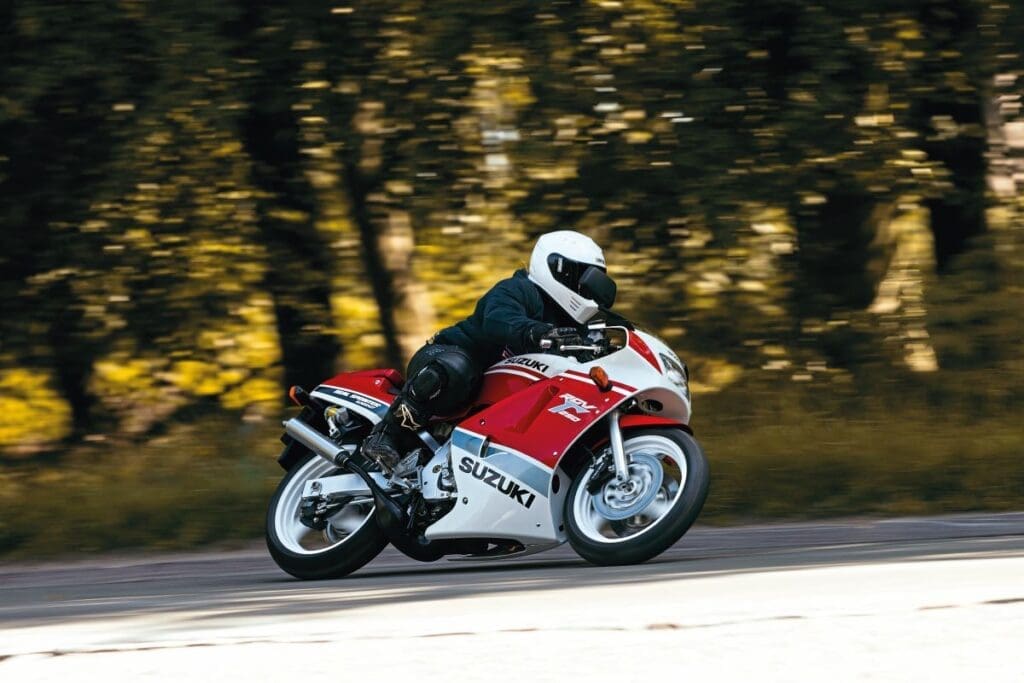
WORDS: ANDY BOLAS PICS: GARY CHAPMAN, MORTONS ARCHIVE
There is a class of motorcycle which is revered by fans over here in the UK, a section of two-wheeled nostalgia that many of a certain age look back on with a smile.
We’re talking about the 250cc two-stroke race-replica and today on test we have one of the best, Suzuki’s RGV250 L from 1990. Oh, it could be Italia 90 all over again, Nessun Dorma and all that…
The Suzuki RGV250 was launched in the UK in 1989 (1988 in Japan as the RGV250 J) and was a far cry from 250cc learner machines the generation above me learned their trade on. This crop of focussed 250s weren’t learner-friendly bikes: nor were they utilitarian machines, instead they were made to look like the hairy-arsed 250s seen in the Grand Prix paddock, real thoroughbred and ‘pure’ race machines…
Since Suzuki introduced the RG250 to the bike-buying public in 1983 there was a tech war going on between the Japanese factories, especially in the 250cc two-stroke and 400cc four-stroke sector for their home market machines and luckily some of these came to our shores officially.
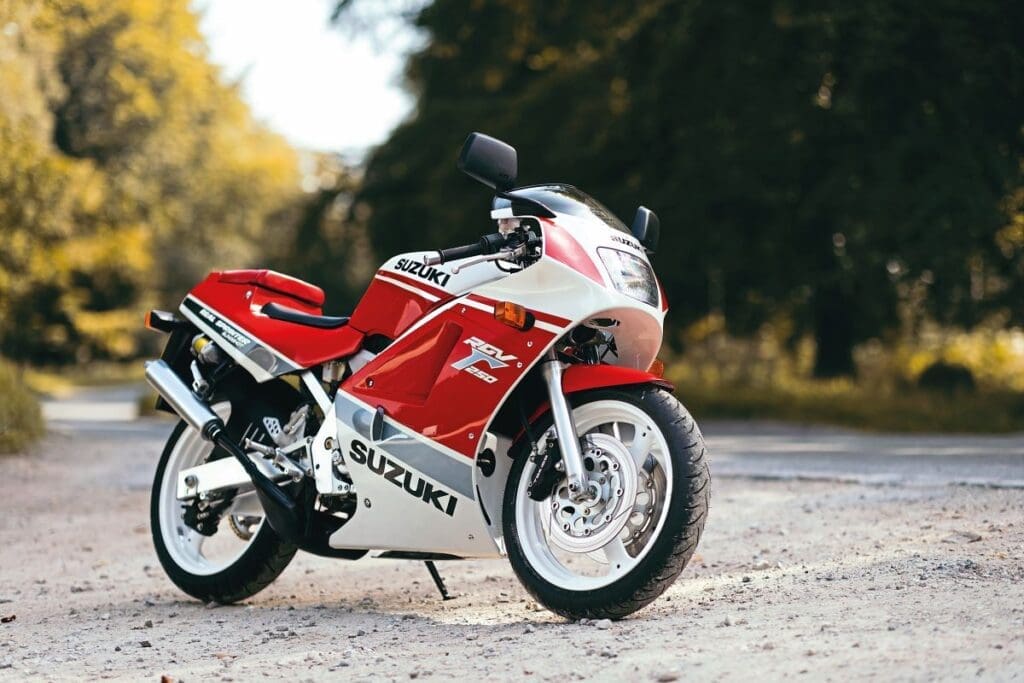
Back in the late 1980s/early 1990s if your fantasy was to be just like Suzuki racer Kevin Schwantz then the RG was the bike for you; looking more factory racer than road-going machine this thing looked fast standing still. Although performance-wise and out on the track the little Suzuki got the better of Yamaha’s TZR250 parallel twin, Kawasaki’s KR-1 was giving the RGV a hard time, so for 1990 there were a few tweaks made to the RGV to try and keep up. Unfortunately Kawasaki released the KR-1S the same year, which again moved the goal posts just that little out of reach for the RGV.
However, it wasn’t all doom and gloom as the KR-1S wasn’t as refined as the RGV and didn’t give the same amount of feedback on the edge, but had a bulging mid-range which the Suzuki could only dream of.
But let’s get back to the start When the RGV was introduced in Japan in 1988 it replaced the outgoing RG250 Mk.4. At this point the Mk.4’s parallel twin engine was replaced with a more compact V-twin engine and initially the new engine was pumping out around 55bhp (45 for the Japanese Domestic Market bikes as they were restricted).
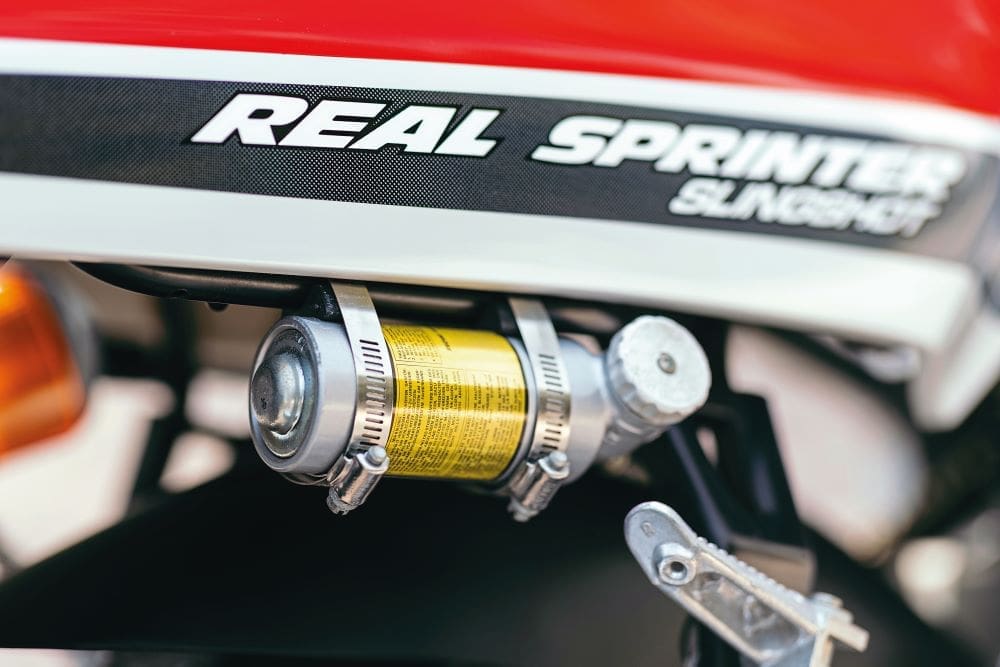
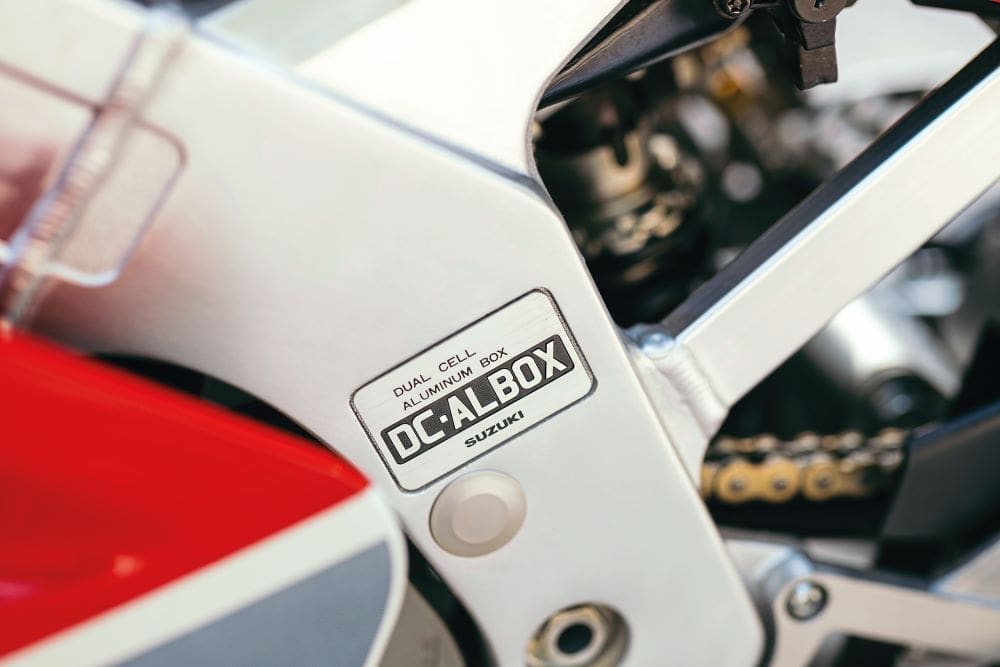
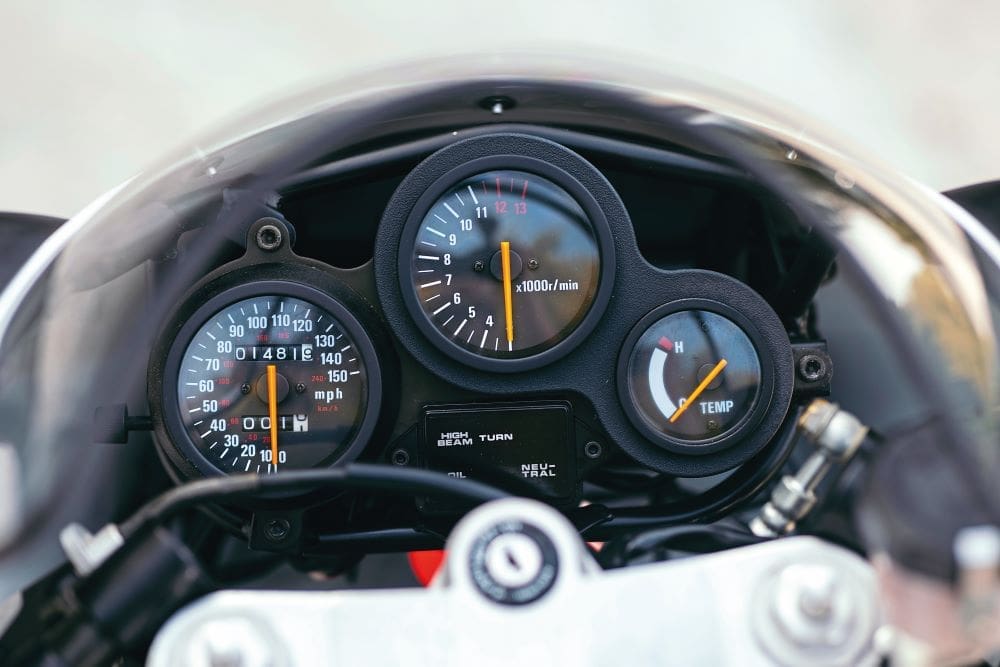
The V configuration allowed the bike to be slightly narrower than the conventional parallel twin and saw Suzuki join Honda in using that layout for its quarter-litre pocket rocket. Meanwhile, Kawasaki along with Yamaha stuck with the parallel twin layout. Yamaha’s TZ250 2MA would move to a reverse-cylinder configuration (the problematic 3MA) before going V-twin with the 1991 3XV.
Suzuki also went down the road of using nikasilplated cylinders like Kawasaki did with the KR-1 instead of traditional liners which could be rebored if things went pop, which they inevitably did from time to time.
The RGV was developed continually throughout its production and 1990 saw its first upgrades (for the UK market) with the L model which consisted of a new multi-adjustable rear shock, 34mm carbs (up from 32mm) with an electronic air bleed which helped smooth the power delivery and also gave a little more mid-range.
In 1991 (M model VJ22) we saw a major upgrade which saw more or less everything upgraded, the styling was not as boxy and the edges were softer. Gone was the 18-inch rear wheel replaced with a 17-inch rim which would take a 150-rear tyre which increased the choice which was important to the production racer lot. Inverted forks and a banana swingarm gave it a GP racer look, as did the two silencers exiting on the right-hand side just like Kevin’s RGV500!
With the introduction of the M model, the KR-1S was left wanting and in race paddocks the whole dynamic of the production 250 class changed overnight. Whereas the L model and KR-1S were closely matched, the M was on another level and everyone wanted one! The next update was when Suzuki had to replace the swingarm with a braced type rather than the banana arm as Honda apparently had patented the design. The VJ22 ran till 95/96 in the UK, when Aprilia took the mantle of the only 250 two-stroke produced for the UK market but using the RGV’s motor, albeit modified.
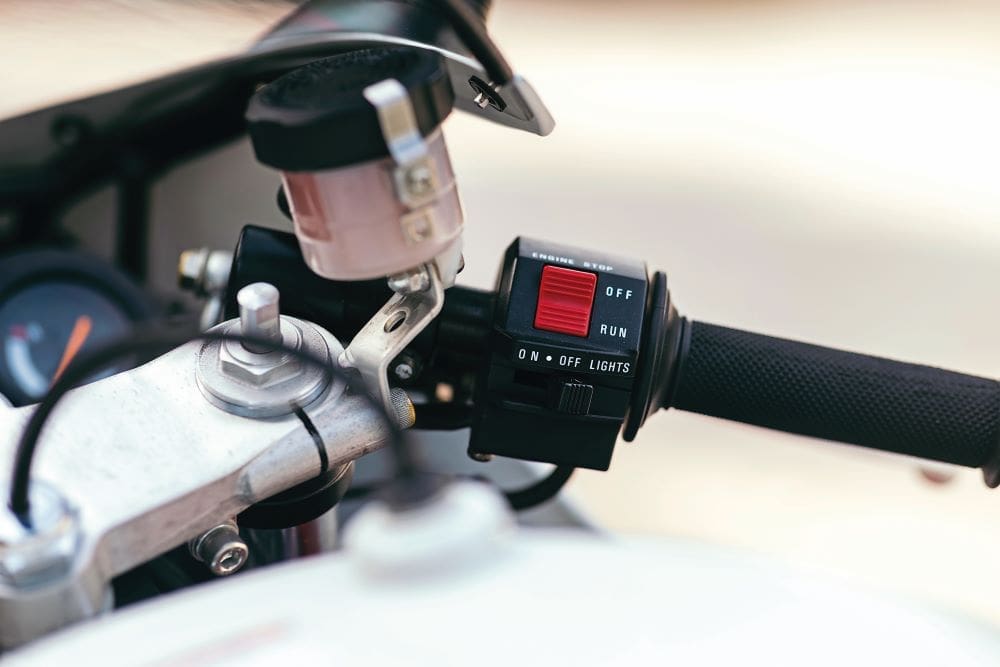
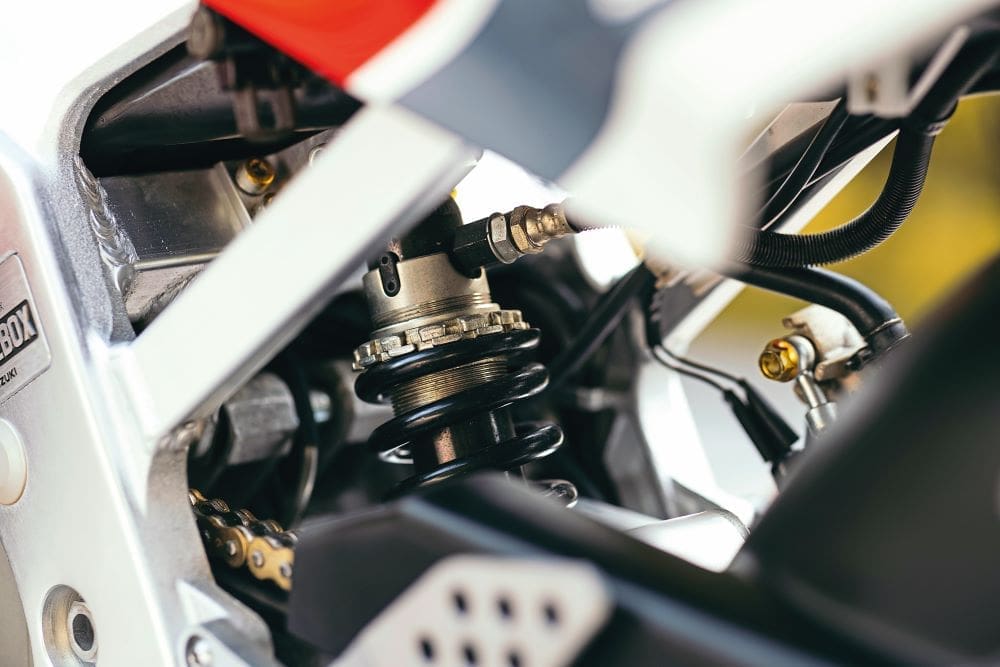
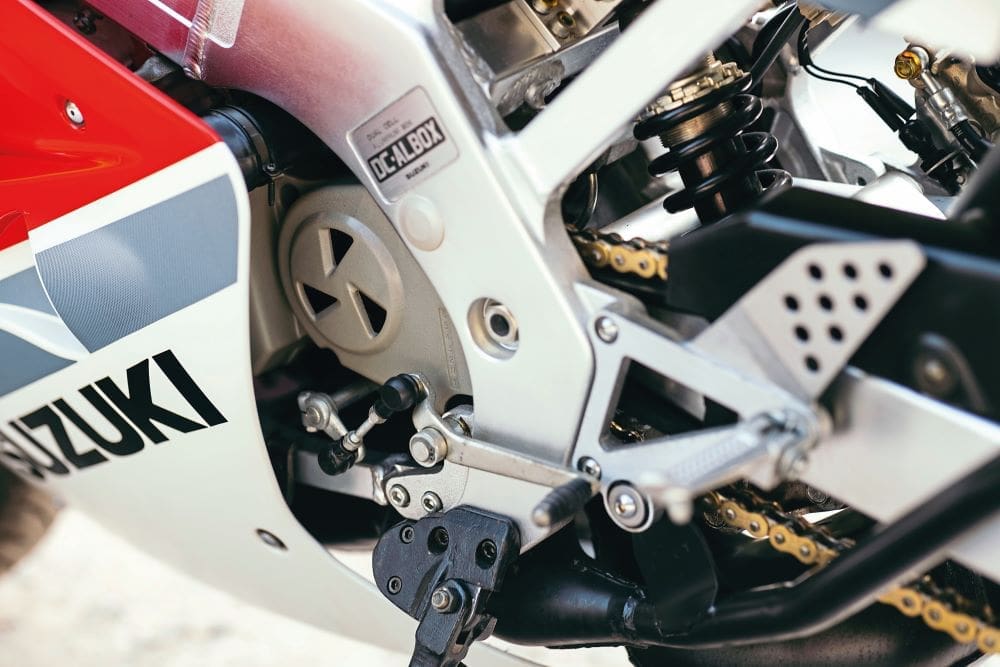
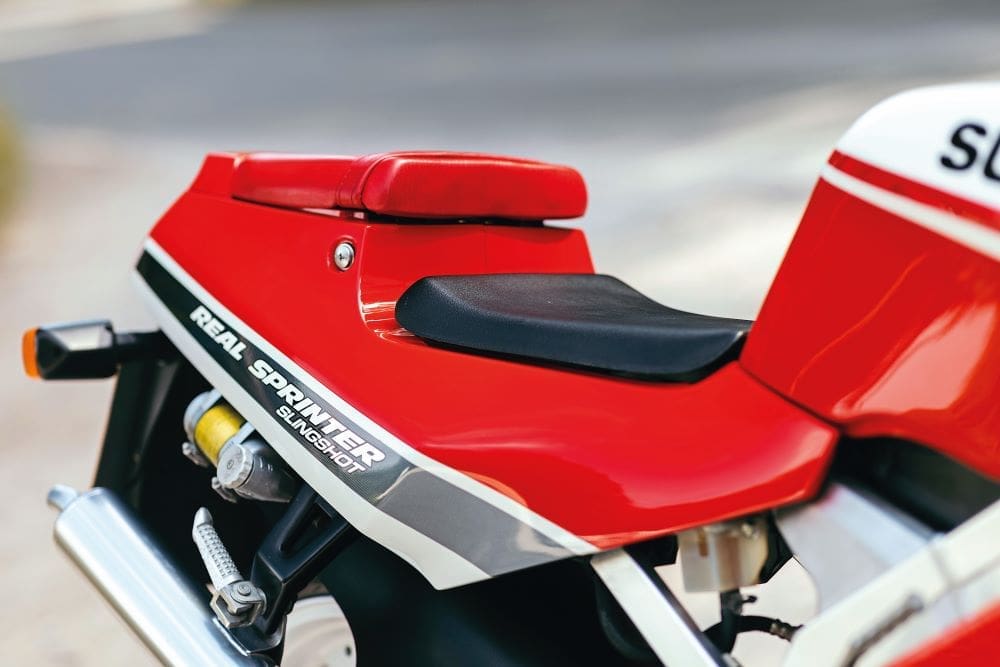
At a time when the 250 market was reaching its peak tech-wise with UK market bikes pushing out a claimed 60bhp and weighing less than 130kg, what more could a budding racer on the road want? Well, with the RGV you got a rev counter that started at 3000 revs like the outgoing Gamma and 500 Gamma as well as a track-style cramped head down, arse up riding position.
Suzuki’s new generation of sports 250 was cramped compared to the other offerings coming to the UK’s shores officially. Also it outdid them on the tech front with its AETC (Automatic Exhaust Timing Control) and electronically controlled air bleed which helped produce a more efficient combustion.
The RGV also had competition from the Honda VFR400 NC30 along with the Kawasaki ZXR400 UK imported four-stroke 400s. These produced the same or slightly more power than the RGV but the NC weighed in at a rather hefty 175kg and the ZXR came in at 159kg. Although the 400cc competition was heavier the engines were more tractable and they still held their own. Two-stroke 250s like the RGV were a little more rewarding than the highrevving little four-strokes were and it made for some stunning racing in the Supersport 400 class…
But enough with the history lesson, let’s look at our stunning test bike.
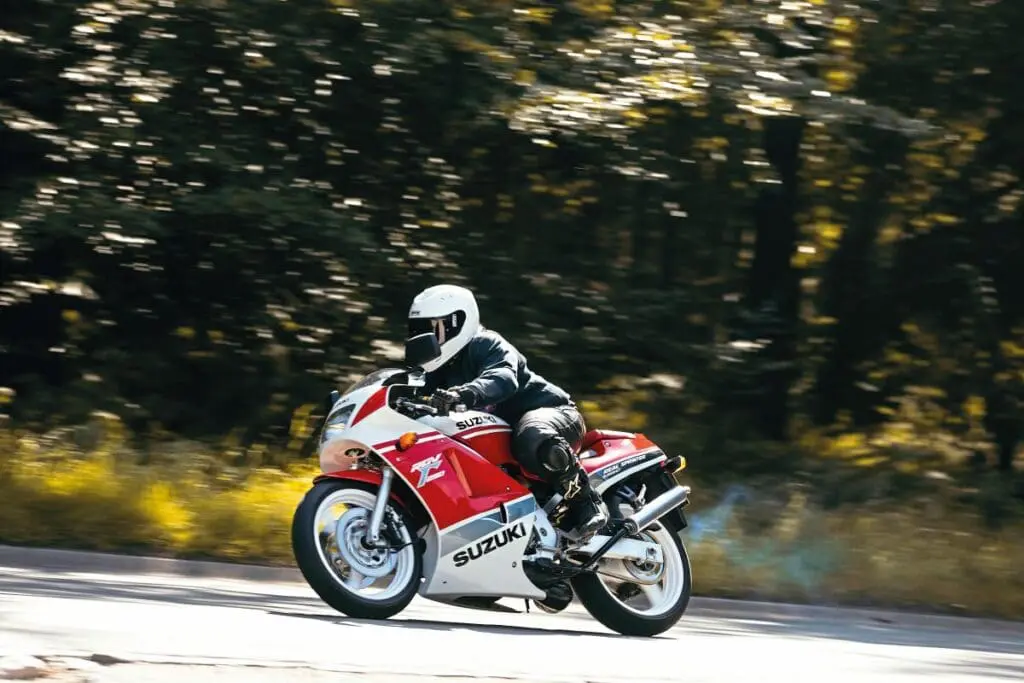
This particular RGV250 is the L model, which was launched in 1990 to the UK market. Other than new tyres for our test it remains pretty much as it left the factory over three decades ago and has covered very few miles in that time, too.
Looking around the bike you can’t help but be impressed with the condition it’s in, especially of the frame and swingarm, also the expansion chambers in their factory black finish look absolutely stunning. It certainly hasn’t had a hard life, its pearl white and red paint gleaming in the sun and looking sharp as the day it rolled out of the showroom.
The equipment is as you would expect for a bike which would have more than likely ended up on the start grid of a race-track: that is ‘basic’! The clocks have a little foam surround, and the rev-counter is very clear in the centre of the rider’s view with the speedo to the left and temperature gauge on the right. Adding to the racer look is the rev counter starting at 3k revs. The pillion pad is just a token gesture, and I don’t think many would relish doing any distance on the back.
Firing the RGV up is a fairly easy affair. Only taking a couple of kicks to cough into life, I have to say it sounds very subdued compared to a KR-1S and doesn’t have that crisp crackly sound, it sounds more road bike than the Kawasaki does.
Throttle response is nice and crisp with both pipes smoking equally and the temperature gauge is slowly lifting off the stop. Pulling away is a pretty smooth experience for such a highly-strung motor with just a little clutch slip required if you want to make a fast getaway. The RGV feels sharper off the line than either the KR-1or S does. I think this is purely down to gearing as the Kawasaki is geared for a considerably higher top speed than the Suzuki as after around 45-50mph they seem pretty even.
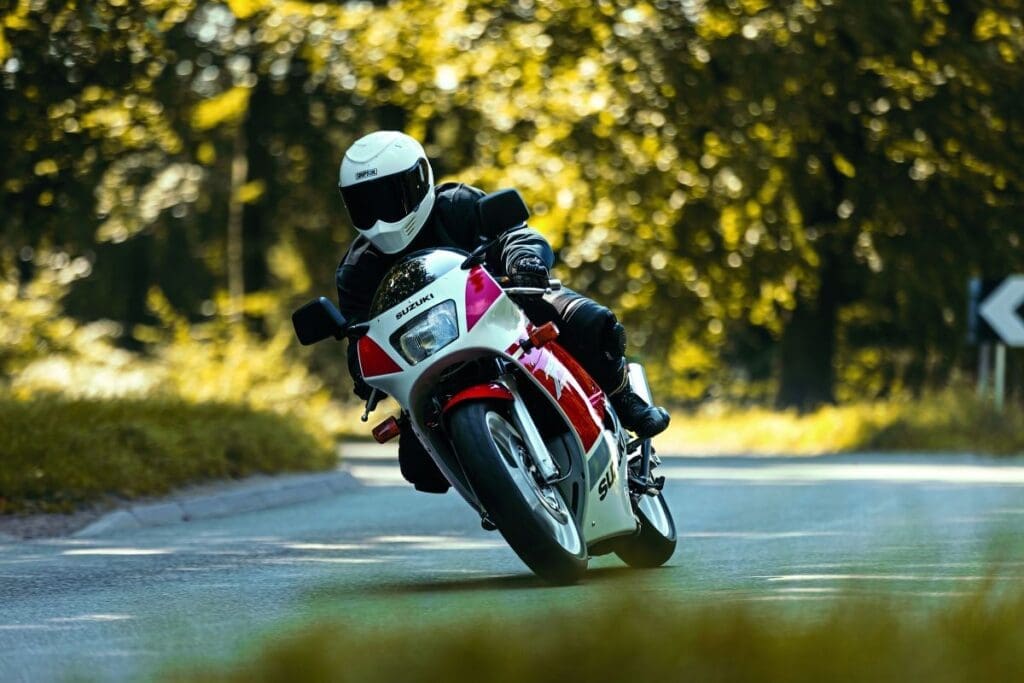
This L model feels like it has more mid-range than my old K model import had and obviously more top-end as the K was a JDM bike with 45bhp. The V-twin is fairly tractable between 4500rpm to 7000rpm but the real rush starts at 8000rpm when all hell is let loose. This rush lasts till 12,000rpm when the ignition hits a brick wall, stopping progress, so it’s best to change up just before this to ensure seamless and rapid progress.
To this end the RGV is slightly harder to ride than its Kawasaki counterpart, which allows you a bit of over-rev. The 249cc V-twin two-stroke motor is fed by two 34mm slingshot carbs and has a bore and stroke of 56mm x 50.6mm with a 7.5-1 compression ratio which is slightly higher than the KR-1S, and uses Suzuki’s AETC which is a guillotine-type exhaust power-valve which bolsters the bottom-/mid-range power without sacrificing the top-end power. Problems can occur when the power-valve wears and falls into the cylinder, leaving a mess! All is not lost as the lovely guys at The Tuning Works make billet valves amongst other things to keep these little firecrackers smoking.
The chassis is excellent and although its rake and trail figures are slightly less radical than a KR-1S at 25 degrees rake and 98mm trail as opposed to the Kawasaki’s 24 degrees rake and 90mm trail, it’s still a sharp-handling bike, possibly down to the 60 profile front tyre compared to 70 on the KR, but doesn’t have the sometimes nervousness the KR can display and seems a little more predictable and less on the ragged edge. The multi-adjustable rear shock keeps everything in check at the rear while the 41mm forks which are adjustable for pre-load only do a cracking job up front. Everything chassis-wise on this bike feels as good as new and I’m guessing this is probably as close as you could get to riding a new one.
Braking is also not left wanting and this bike can stop on the proverbial sixpence (as well as turn on a dime – to mix up our monetary Suzuki synonyms). Up front we have a pair of four-piston Tokico calipers gripping a pair of 290mm floating discs which give great feel and progression. Out on the open road the RGV is a pleasure to ride chasing the power-band, then the next gear just makes me grin like a mad man (think ‘The Joker’). The whole package comes alive on the long, sweeping A-roads and also when the lanes get a little nadgery and tight.
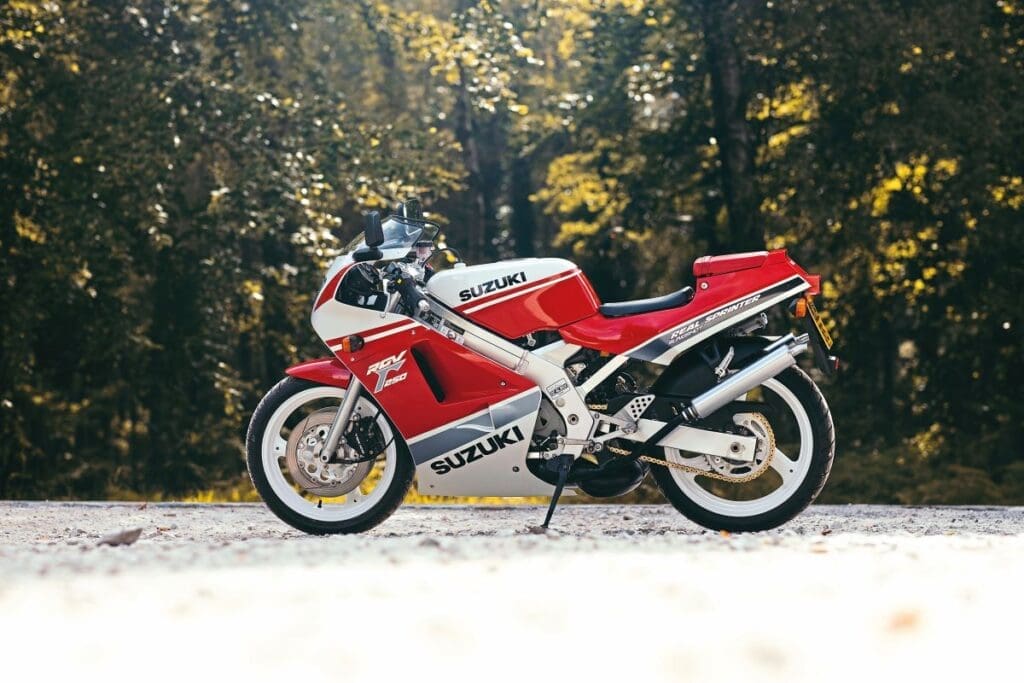
Considering its steering geometry and racer credentials it doesn’t get as frisky as some of the other sports 250s I have ridden. Don’t get me wrong, it’ll shake its head if provoked but it’s well behaved if you don’t completely disregard its feelings!
Personally, I prefer riding either a KR-1 or 2MA TZR but only down to the comfort aspect, but then who would buy a 250cc sports bike and not expect a few aches and pains when you get off it?
The thing is – like childbirth (or so I’ve been told) you soon forget the pain and only remember the good stuff. And so you will – like me – swing a leg over the old girl and have another ride, just for the hell of it.
If you’ve never tried a sharp, focused 250cc race-replica, you really should – it’s one of the purest motorcycling pleasures there is.
Second opinion: Ella Middleton

“Oh God where do I start, this thing gives me goose bumps just looking at it! So it sounds a little quieter than a KR-1S but I can live with that as it looks a thousand times better than the Kawasaki could ever look.
I’m not too keen on riding the RGV through town as it doesn’t seem to like crawling along in traffic. In fact it only really seems to make sense when you are going for it and then I have to keep reminding myself to change up before I hit the brick wall rev-limiter that Suzuki decided to use which has caught me out a couple of times. I am astounded by the way it handles and stops I know it’s done less than 1500 miles currently but it doesn’t feel like a 30-plus-year-old bike; everything feels so tight and positive. The power delivery is so crisp and aggressive, I love it. I think I want an RGV now!”
Specification
ENGINE TYPE: Two-stroke 90-degree V-twin with AETC
CAPACITY: 249cc
BORE X STROKE: 56 x 50.6mm
COMPRESSION RATIO: 7.5:1
INDUCTION: Crank case reed valve
COOLING SYSTEM: Liquid
CARBURATION: 2 x TM34SS carbs
IGNITION: Digital
TRANSMISSION: 6-speed chain driven
FRAME TYPE: Box section aluminium ribbed construction
SUSPENSION, FRONT: 41mm forks with pre-load adjustment
SUSPENSION, REAR: Full Floater, with rear shock adjustable for pre-load, compression and rebound damping
FRONT TYRE: 110/70/17
REAR TYRE: 140/60/18
BRAKES, FRONT: 2 x 290mm fully floating discs with twin four-piston calipers
BRAKES, REAR: Single 210mm disc with twin-piston caliper
LENGTH X WIDTH X HEIGHT: 2015mm x 695mm x 1065mm
WHEELBASE: 1375mm
RAKE/TRAIL: 25 degrees/98mm
SEAT HEIGHT: 755mm
FUEL CAPACITY: 17 litres
DRY WEIGHT:128kg
MAX POWER: 58bhp @10750rpm
MAX TORQUE: 28.9lb-ft @10,400rpm



